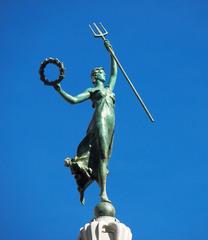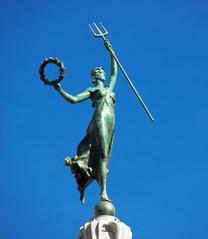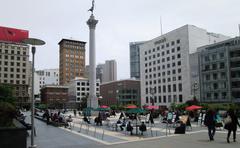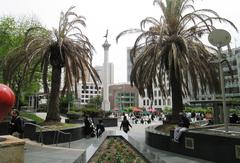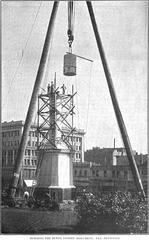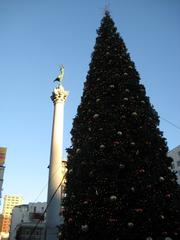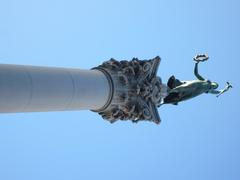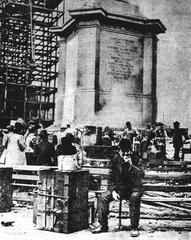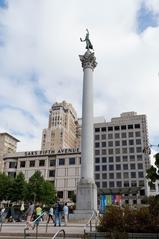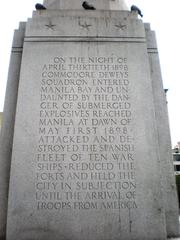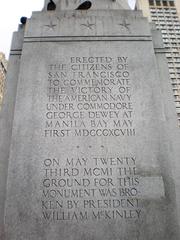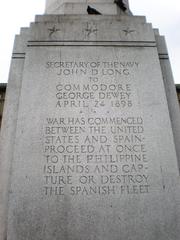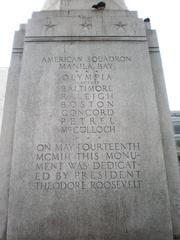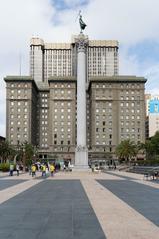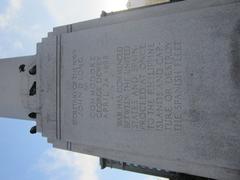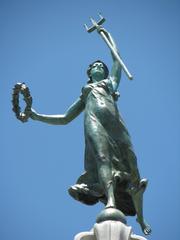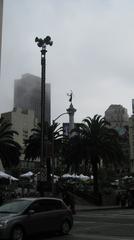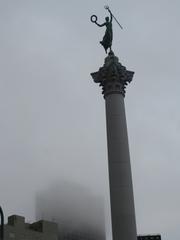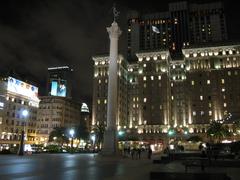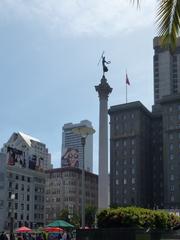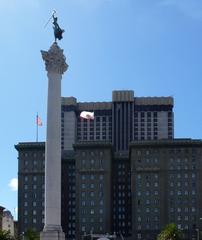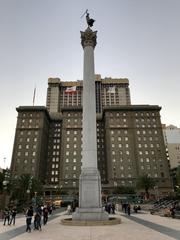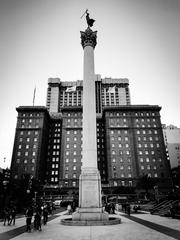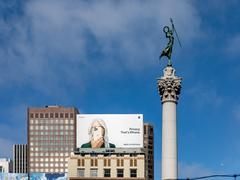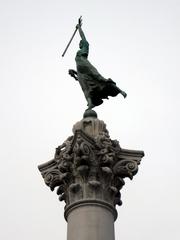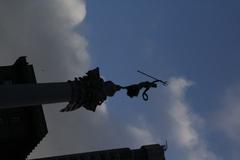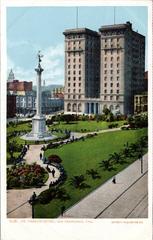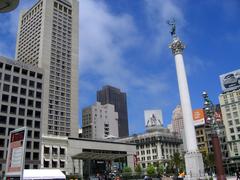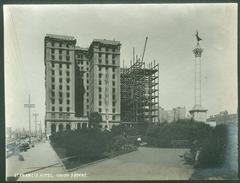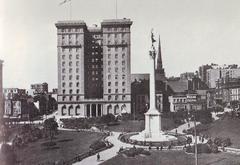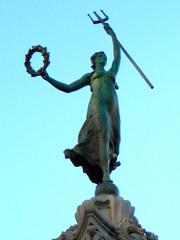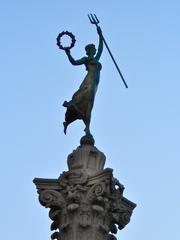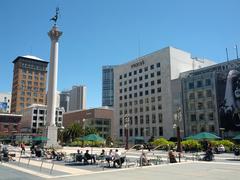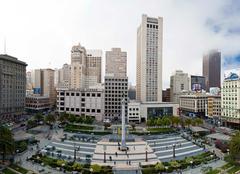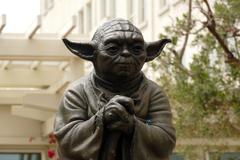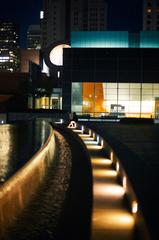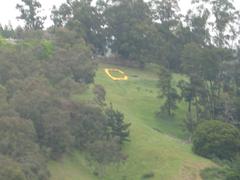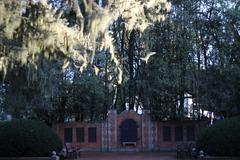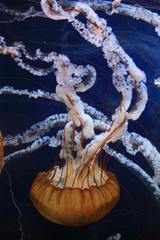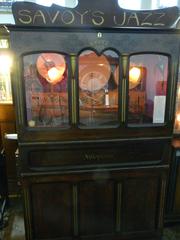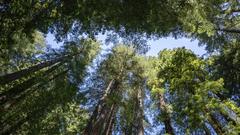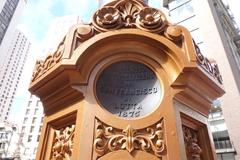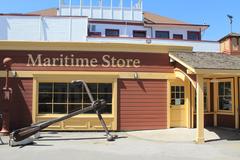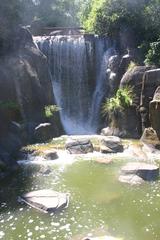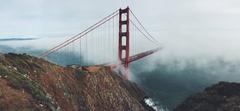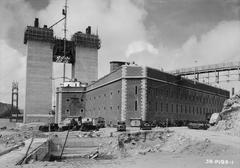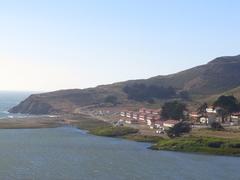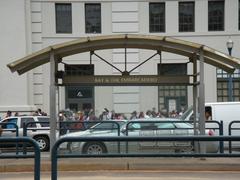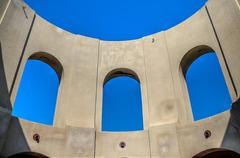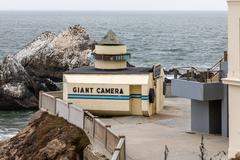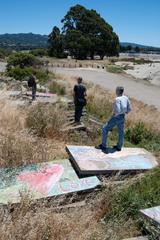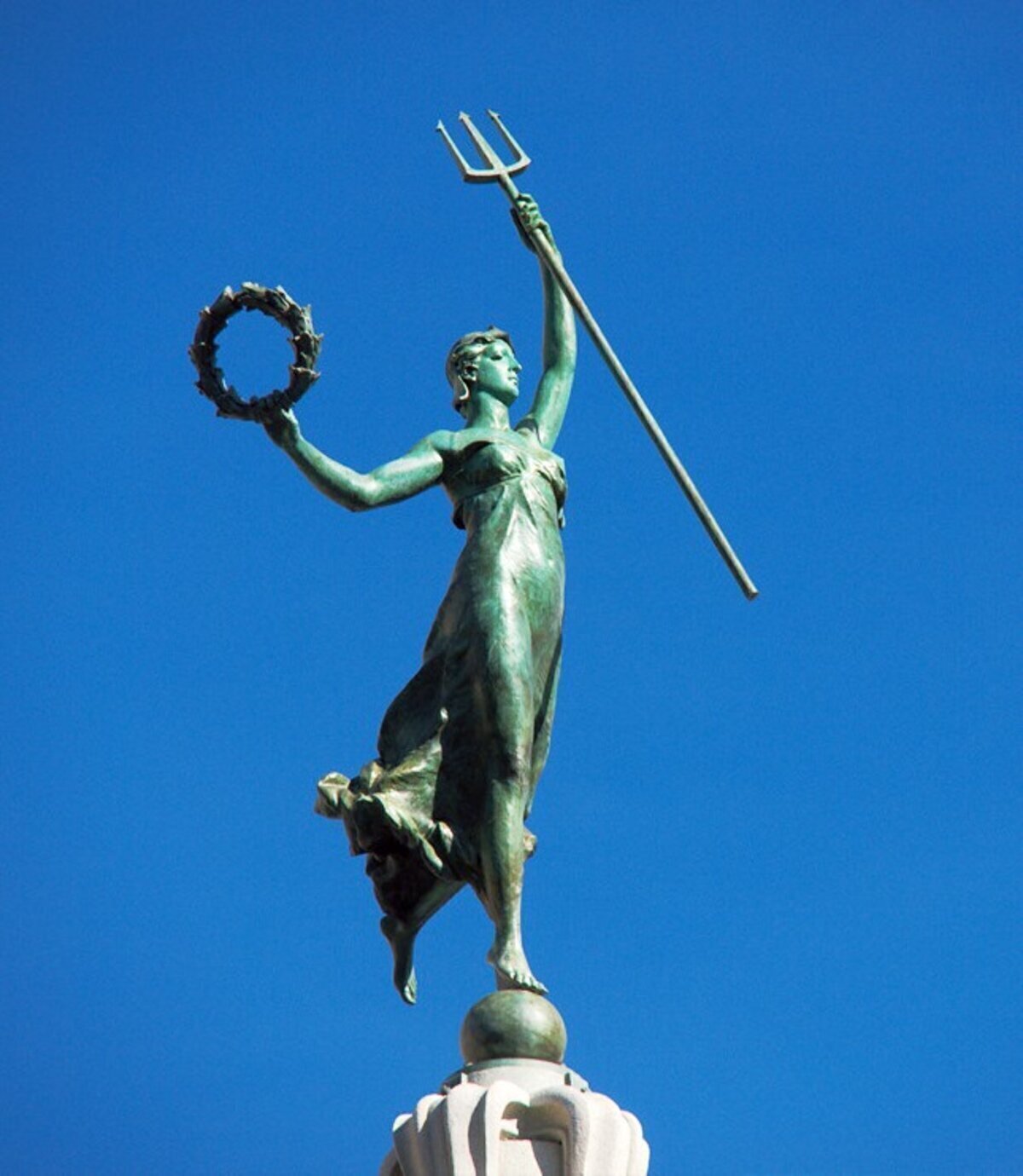
Visiting Dewey Monument: Hours, Tickets, and Tips
Date: 17/07/2024
Introduction
The Dewey Monument, located in the heart of Union Square, San Francisco, stands as a tribute to Admiral George Dewey’s triumphant victory at the Battle of Manila Bay during the Spanish-American War in 1898. This iconic landmark is not just an architectural marvel but a symbol of American naval prowess and historical significance. Erected in 1903, the monument’s towering presence is a testament to its lasting legacy and the public’s admiration for Dewey’s contributions (San Francisco Chronicle). Visitors to the Dewey Monument can explore its rich history, appreciate its artistic features, and immerse themselves in the vibrant cultural atmosphere of Union Square. This guide provides comprehensive information on the monument’s history, architectural significance, visitor tips, and its role in American history, ensuring a well-rounded and enriching experience for all who visit.
Table of Contents
- Introduction
- History of Dewey Monument
- Visitor Information
- Historical Significance
- Preservation and Restoration
- Cultural Impact
- Educational Value
- FAQ
- Conclusion
History of Dewey Monument
Origins and Construction
The idea for the Dewey Monument was conceived shortly after Admiral Dewey’s victory at Manila Bay, as a way to honor his significant contribution to American naval history. Funded through public subscription, the citizens of San Francisco raised the necessary funds for its construction. The design competition held in 1900 was won by sculptor Robert Ingersoll Aitken and architect Newton Tharp. The monument was officially dedicated on May 14, 1903, in a ceremony attended by President Theodore Roosevelt and other dignitaries (San Francisco Chronicle).
Architectural Features
Standing at 85 feet tall, the Dewey Monument features a 75-foot granite column in the Corinthian style, topped by a 10-foot bronze statue of Victory. The column’s granite was sourced from California quarries, and the base includes bronze reliefs depicting scenes from the Battle of Manila Bay. The statue of Victory, designed by Aitken, symbolizes naval power and victory, inspired by classical representations of Nike (Public Art and Architecture from Around the World).
Visitor Information
Visiting Hours and Tickets
The Dewey Monument is located in Union Square, which is open to the public 24/7. There is no entrance fee to visit the monument, making it an accessible and budget-friendly attraction in San Francisco. For those interested in a more in-depth experience, guided tours of Union Square, including the Dewey Monument, can be arranged through various local tour companies.
Travel Tips
Union Square is easily accessible by public transportation, including buses, BART, and Muni. Parking can be challenging, so using public transit is recommended. Nearby attractions include the San Francisco Museum of Modern Art, the Cable Car Museum, and Chinatown, making it easy to explore multiple sites in one day.
Special Events and Guided Tours
The Dewey Monument often serves as a backdrop for public events, including political rallies, protests, and celebrations. Seasonal events such as holiday markets and art festivals also take place in Union Square, providing a vibrant atmosphere for visitors. Guided tours are available through various tour operators, offering historical insights and anecdotes about the monument and its significance.
Historical Significance
The Battle of Manila Bay on May 1, 1898, marked a pivotal moment in American history, resulting in the destruction of the Spanish Pacific fleet and signaling the emergence of the United States as a global naval power. The Dewey Monument stands as a tribute to Admiral Dewey’s leadership and the bravery of the sailors who fought under his command (History.com).
The monument also reflects the broader context of American imperialism at the turn of the 20th century, commemorating the acquisition of territories such as Puerto Rico, Guam, and the Philippines, and signaling a shift towards a more interventionist foreign policy (Smithsonian Magazine).
Preservation and Restoration
Over the years, the Dewey Monument has undergone several preservation efforts to maintain its integrity and aesthetic appeal. Notable restoration work includes cleaning and minor repairs in the 1940s, extensive restoration in the 1990s, and a major renovation in 2002-2003, which included re-gilding the statue of Victory and cleaning the granite column (SF Gate).
Cultural Impact
As an iconic symbol of San Francisco, the Dewey Monument attracts thousands of visitors each year. Its central location in Union Square makes it a popular meeting point and a subject of numerous postcards, photographs, and artworks. The monument’s role in public life extends to hosting various events and demonstrations, reflecting its continued relevance in the city’s social and cultural landscape (San Francisco Travel).
Educational Value
The Dewey Monument offers valuable educational opportunities for those interested in American history, naval warfare, and public art. Guided tours of Union Square often include detailed information about the monument, and educational materials are available through local museums and historical societies, such as the California Historical Society (California Historical Society).
FAQ
Q: What are the visiting hours for the Dewey Monument? A: The Dewey Monument is located in Union Square, which is open to the public 24/7.
Q: Is there an entrance fee to visit the Dewey Monument? A: No, visiting the Dewey Monument is free of charge.
Q: Are guided tours available? A: Yes, guided tours of Union Square, including the Dewey Monument, are available through various local tour companies.
Q: What are some nearby attractions? A: Nearby attractions include the San Francisco Museum of Modern Art, the Cable Car Museum, and Chinatown.
Conclusion
The Dewey Monument stands as a testament to Admiral George Dewey’s legacy and the broader historical context of American expansionism. Its architectural beauty, historical significance, and cultural impact make it a must-see attraction for anyone visiting San Francisco. Be sure to explore Union Square and its surroundings to fully appreciate the rich history and vibrant culture of this iconic landmark.
